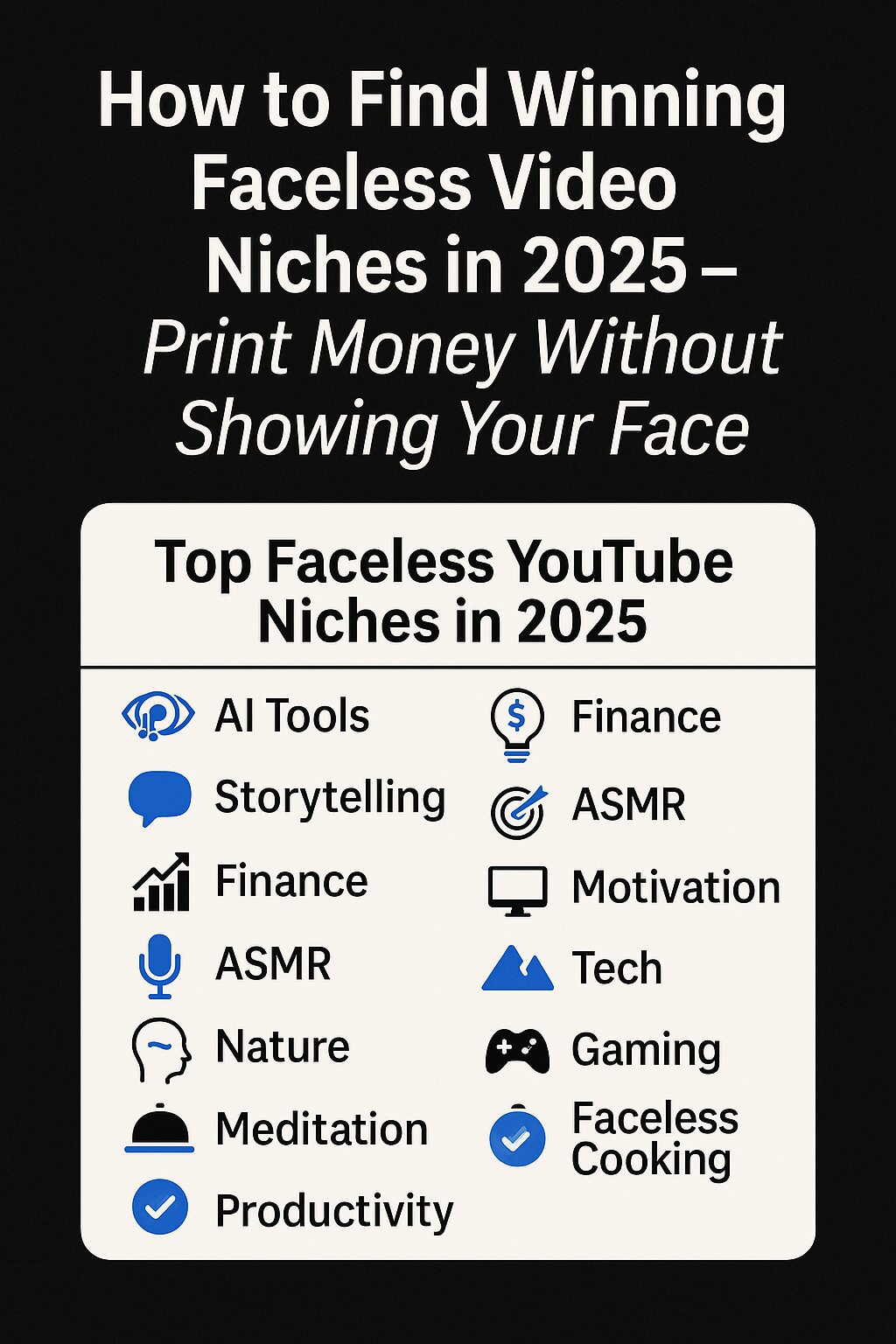(Part 4 of the Faceless Empire Series)
Creating faceless videos is only half the battle. The real power lies in your script — the core message that grabs attention, delivers value, and keeps viewers watching until the very last second.
In 2025, with AI tools booming, scriptwriting isn’t just a creative skill — it’s a growth engine. This post will show you how to:
- Structure a viral script step-by-step
- Refine your tone and voice using AI
- Automate production without losing quality
Let’s turn plain words into powerful content that prints money — anonymously.
1. Start with the Hook (0–5 sec)
The first 3–5 seconds decide everything.
You must immediately tell the viewer:
- What they’ll get
- Why they should care
- Why it’s different
Examples:
“Here’s how I made $412 in 7 days without showing my face — using AI and 3 free apps.”
“Stop scrolling — this one faceless video trick might double your views.”
Use direct benefit, mystery, or shocking facts.
2. Build Curiosity (5–20 sec)
Once you hook them, create a gap. Let the viewer want more.
Tactics that work in 2025:
- Tell them you’ll reveal a secret later (“I’ll show you the exact tool at the end.”)
- Show partial results (“Here’s the before… I’ll show the after in 10 seconds.”)
- Ask a powerful question (“What if you could earn without ever recording your voice?”)
3. Deliver Value with Structure (20–60 sec+)
The meat of your video must deliver real value fast — not fluff.
Here’s a proven format:
- Step 1: Set the context
- Step 2: Show the tool/process
- Step 3: Walk through the example
- Step 4: Add one surprising tip
- Step 5: Invite action or subscribe
Pro Tip: For listicles or tutorials, use numbers (“3 steps to create an AI script”) to keep viewer retention high.
4. End with a Strong CTA
The last 10 seconds should:
- Invite action: “Try this now — and let me know your results.”
- Suggest continuity: “Follow for part 2 — where I show the exact upload process.”
- Give one bonus tip: “Bonus: This works even if you have no followers.”
A clear CTA is more powerful than flashy effects.
5. Refine with ChatGPT
Here’s how to automate your voice and tone:
- Use prompts like: “Rewrite this script in a casual YouTube tone, max 90 seconds, for a faceless short-form video.”
“Add suspense and storytelling to this basic tutorial.” - Use it to:
- Shorten long parts
- Simplify confusing sections
- Add engagement hooks
You are not competing with other creators — you’re competing with their scroll button.
6. Bonus: Batch & Reuse Scripts
- Turn one script into:
- YouTube Shorts
- Instagram Reels
- TikTok
- Voiceover for blog post
- Store your scripts in folders by niche: /faceless/scripts/ai-tutorials/
/faceless/scripts/moneytips/
Make your content pipeline fast, repeatable, and scalable.
Final Advice
If you can write 10 great 60-second scripts this month, you can build a faceless empire by the end of the year.
Don’t overthink. Start simple. Use free tools. And focus on message, not perfection.
Coming Up in Part 5:
Faceless Video Monetization – 5 Best Platforms to Earn from Your AI-Generated Videos in 2025
→ In the next part, we’ll show you where and how to monetize your faceless content — including YouTube, TikTok Creator Fund, affiliate links, and digital product offers.

